 W
WThe AlphaSmart was a brand of portable, battery powered, word-processing keyboards manufactured by NEO Direct, Inc.. Originally released in 1993, the first AlphaSmart models were intended for writing on-the-go and could be plugged into a computer to transfer saved written text. The units' portability and long battery life made them valuable to journalists, writers, and students. Later models expanded functionality by spell-checking, running applications, and accessing wireless printers.
 W
WThe Sony CLIÉ is a series of personal digital assistants running the Palm Operating System developed and marketed by Sony from 2000 to 2005. The devices introduced many new features to the PDA market, such as a jog-wheel interface, high-resolution displays, and Sony technologies like Memory Stick slots and ATRAC3 audio playback. Most models were designed and manufactured in Japan. The name is an acronym for creativity, lifestyle, innovation, emotion though formerly communication, link, information and entertainment. It was initially an attempt at a new coinage term, though it means "tool" in the Jèrriais language.
 W
WThe Fossil Wrist PDA is a smartwatch that runs Palm OS. The newer incarnation, which does not include Palm OS, is called the Fossil WristNet watch.
 W
WThe LifeDrive was a Palm OS-based handheld personal digital assistant device that was produced by PalmOne, a former incarnation of Palm, Inc. The device was PalmOne's first and only foray into the "Mobile Manager" device category. As its name suggests, Palm intended the LifeDrive to be capable of providing all the capabilities and data storage space that a user could possibly need during the course of the day, including contacts, calendar, music, images, video, and applications. At the time of release, the 4-gigabyte capacity that was chosen for this task could not be achieved using the flash memory used by most PDAs, while keeping the cost of the device low enough for consumer purchase. For this reason, a 4 GB microdrive hard disk drive was selected for the task. It featured a separate data partition that could be used as a portable disk drive. The LifeDrive featured Bluetooth and Wi-Fi connectivity, the first Palm handheld to feature both. The device came pre-loaded with eReader, Documents To Go, and WiFile software.
 W
WPalm was a line of personal digital assistants (PDAs) and mobile phones developed by California-based Palm, Inc., originally called Palm Computing, Inc. Palm devices are often remembered as "the first wildly popular handheld computers," responsible for ushering in the smartphone era.
 W
WThe Palm Centro is a smartphone marketed by Palm, Inc. beginning its release on October 14, 2007 offering the functionality of the larger Treo 755p in a smaller size.
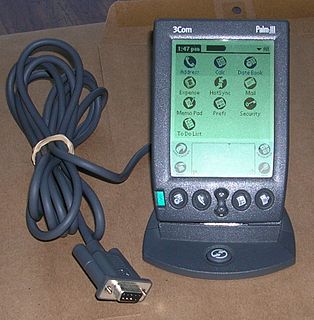 W
WThe Palm III is a personal digital assistant that was made by the Palm Computing division of 3Com. It went on sale in 1998 as a replacement for the PalmPilot handheld. It was the first Palm handheld to support infrared file transfer and a Flash ROM-capable operating system. At release, the Palm III was priced at US$400.
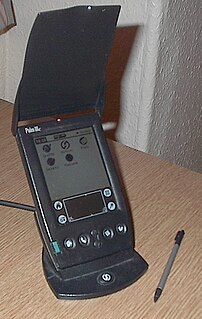 W
WThe Palm IIIc was the first colour PDA made by Palm, Inc., released in February 2000 for $449USD. It ran Palm OS 3.5, the first Palm OS version to have native colour support and supported paletted 8-bit colour modes. Using the Palm OS Upgrade Install CD, the Palm IIIc could be updated to Palm OS 4.1. The machine has a TFT LCD that is bright indoors. The Palm IIIc features the classic III-series connector, 8MB of RAM and a 20MHz DragonBall EZI CPU. The unit also has a lithium ion rechargeable battery and a slightly modified version of the original Palm III chassis.
 W
WThe Palm IIIe is a PDA from Palm Computing released in 1999 briefly after the more expensive and more advanced Palm IIIx.
 W
WThe Palm IIIx is a PDA from Palm Computing released in 1999, briefly before the scaled down Palm IIIe was introduced into the marketplace.
 W
WThe Palm IIIxe is a discontinued Palm personal digital assistant that was designed and manufactured by Palm, Inc. It cost US$249 when new.
 W
WThe Palm m100 series consists of four Palm OS based personal digital assistants titled m100, m105, m125, and m130. These models were intended to be "entry-level" PDAs, and therefore their cases were built from cheaper materials. Most notably, the covers of the LCD screens and the digitizers were plastic rather than glass, and the screens were smaller than the more expensive Palms on sale at the time.
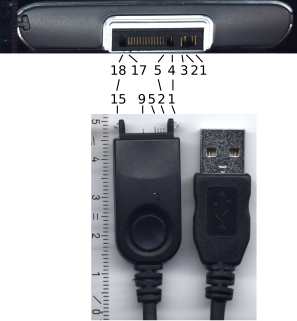 W
WThe Palm Multi-Connector is a power, audio and data interface connector designed by Palm, Inc.
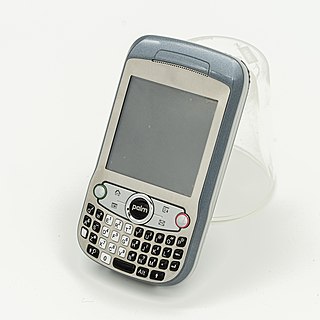 W
WThe Palm P850 or Palm Treo P850, is a Palm OS-based smartphone released in 2010. This device was a minor update of the Treo 650, tailored specifically for the Chinese market and sold as a low-cost smartphone option.
 W
WPalm V is a personal digital assistant (PDA) by 3Com.
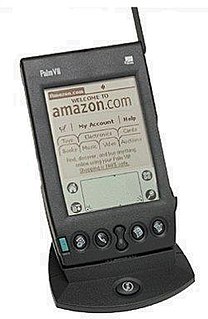 W
WThe Palm VII was a personal digital assistant made by the Palm Computing division of 3Com. The device featured an antenna used for wireless data communication, a first for a Palm device. Connectivity was provided through the Mobitex network, under the now defunct Palm.net service. Web Clipping applications, also known as Palm Query Applications (PQAs) made use of the network to request and post web data. The devices also provided PQA developers with the user's position, in the form of a zipcode, making the Palm VII the first web-enabled Location-Based Services mobile platform. The cost of service was $14.95 per month, and allowed a limited number of web pages to be viewed.
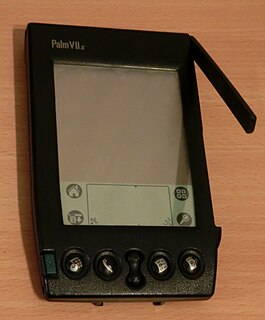 W
WThe Palm VIIx was a personal digital assistant made by Palm, Inc. The device featured an antenna used for wireless data communication. Connectivity was provided through the Mobitex network under the now defunct Palm.net service. Web Clipping applications used the network to process data. The cost of service was $14.95 per month and allowed a limited number of web pages to be viewed.
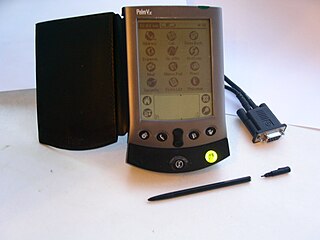 W
WThe Palm Vx was a personal digital assistant made by the Palm Computing division of 3Com. It benefited from the sleek design and low weight of its predecessor, the Palm V, while increasing the available storage to 8 MB. At 114 grams, it was one of the lightest models ever offered by Palm. Retail price at launch was US$399.
 W
WThe PalmPilot Personal and PalmPilot Professional are the second generation of Palm PDA devices produced by Palm Inc. These devices were launched on March 10, 1997.
 W
WThe PalmPilot Professional is a personal digital assistant. While the PalmPilot was released March 10, 1997 as an updated version of the Pilot 5000, there was delayed general availability of the Professional model in the marketplace.
 W
WThe Samsung SPH-i300 was an early Palm OS-based smartphone manufactured by Samsung. It was released around 2001. It was marketed in the United States for use on Sprint's mobile phone network. It was the first "PDA phone" in the US with a color screen.
 W
WThe Tapwave Zodiac is a mobile entertainment console. Tapwave announced the system in May 2003 and began shipping in October of that same year. The Zodiac was designed to be a high-performance mobile entertainment system centered on video games, music, photos, and video for 18- to 34-year-old gamers and technology enthusiasts. By running an enhanced version of the Palm Operating System (5.2T), Zodiac also provided access to Palm's personal information management software and many other applications from the Palm developer community. The company was based in Mountain View, California.
 W
WThe Treo 90 is a Palm OS PDA developed by Handspring. It was released on May 28, 2002. The Treo 90 was the only Treo model produced without an integrated cellular phone and was the first model of the Treo product line. When first released it was the smallest Palm OS device on the market.
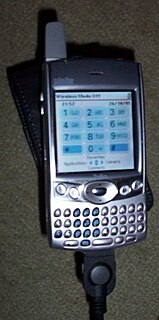 W
WTreo 600 was a smartphone developed by Handspring, and offered under the palmOne brand after the merger of the two companies. Released in November 2003, it has a number of integrated features and it is possible to check the calendar while talking on the phone, dial directly from contacts list, take pictures or send emails. It includes a five-way navigation button and favorites screen allowing quick access to the phone functions.
 W
WThe Palm Treo 650 is a Palm OS-based smartphone, the successor to Palm's Treo 600. It began shipping in November 2004, and was discontinued in 2008.
 W
WThe Palm Treo 680 is a combination hybrid PDA/cellphone, or smartphone as the successor to the company's Treo 650.
 W
WThe Palm Treo 700p was a cell phone with advanced capabilities, commonly referred to as a smartphone. Unlike the slightly earlier Treo 700w, this model is based on Palm OS. This is the first Palm OS-based Treo model to feature high-speed cellular network support, and is also the first Treo model to support Bluetooth 1.2.
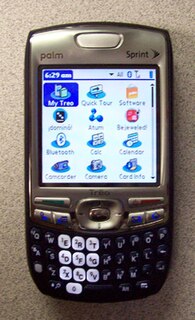 W
WThe Treo 755p is a smartphone developed by Palm, Inc. It was released on May 15, 2007 as the first CDMA Treo without an aerial antenna. This Treo has a form factor similar to that of the GSM Treo 680, and is equipped with the full Palm OS. It has been described as a Treo 700p in a Treo 680's body.
 W
WThe Tungsten series was Palm, Inc.'s line of business-class Palm OS-based PDAs.
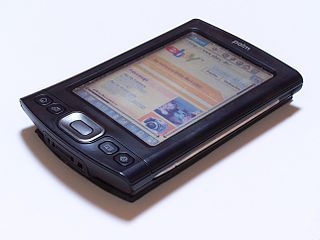 W
WThe Palm TX was a personal digital assistant which was produced by Palm, Inc. It was announced and released as part of Palm's October 2005 product cycle, and was in production until March 2009.
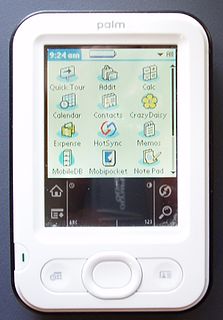 W
WThe Z22 was one of the first of Palm, Inc.'s handhelds to be released under the new "Palm" brand, and the first to be released without the "Zire" moniker. Released on October 12, 2005, it replaced the monochrome Zire 21, and was priced at $99 USD. The Palm Z22 came with Palm OS Garnet 5.4.9 preloaded and is not upgradable. It featured a 200 MHz Samsung S3C2410 ARM processor developed around the 32-bit ARM920T core that implements the ARMv4T architecture. The Z22 ran on a li-ion battery that had a life of about 8 hours depending on usage.
 W
WThe Zire 31 is a Zire Handheld from palmOne. The product was first released in April 2004 as a replacement for Zire 21. It runs Palm OS 5.2.8 and features a color 160×160 display, a SDIO slot and a standard 3.5mm stereo headphones jack. The improved PIM apps are supplied. The ROM includes RealOne Player giving the device some digital audio player capabilities. They can be extended with 3rd party software, such as TCPMP. The Zire 31 has a 5-way navigator pad, but still only 2 quickbuttons, as opposed to the standard 4 on the mid-range Zires 71/72. It was replaced by the Z22, which lacks the SD/MMC/SDIO Expansion and headphone jack.
 W
WThe Zire 72 is Palm, Inc.'s second Personal Digital Assistant with an integrated digital camera. Introduced in 2004, it is the replacement for the Zire 71, having a 1.2 megapixel camera, 32 MB of memory, built-in Bluetooth wireless communication, video recording and playback capability, a built-in microphone, hi-res hi-color screen, SecureDigital smartcard slot, and a 312 MHz Intel PXA270 processor.